Since 2018, tiered skirts have come back into fashion. Since there are not many products available in stores, many fashionistas resort to handicrafts. This article tells you how to sew a three-tiered skirt and what you need for this.
- Choice of fabric
- Necessary tools and materials
- Calculation of material and pattern
- Calculating the length of each tier
- Fabric layout of the tiered skirt pattern
- Layered American skirt (flared skirt)
- Model of a product with separate rows
- Model with thick and lush frills
- How to calculate fabric
- Moderate width model
- How to calculate the amount of fabric
- Tiered skirt with yoke
- What to wear with tiered skirts
Choice of fabric
The most common materials for tiered skirts with a large flare are light, delicate, easily draped: tulle, organza, cambric, thin chintz. These fabrics help to achieve a “light” rather than static style. Tiered skirts can also be sewn from dense fabrics: thick suiting, light tweed, wool.
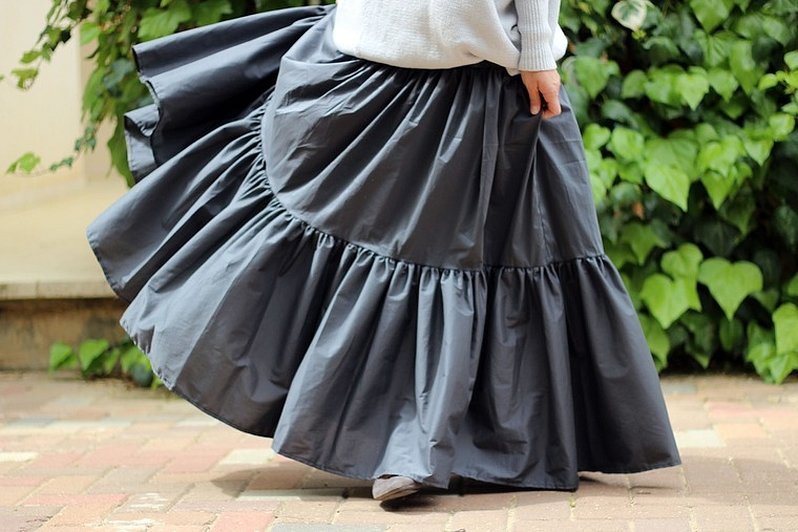
Then it will be necessary to make the flare coefficient smaller, and wear the finished product with a tight top, so that there is no impression that the clothes are bulky. The product can not only be sewn, but also crocheted. But it will take much longer.
Necessary tools and materials
To sew you will need a set of standard tools:
- Fabric of your choice;
- Threads in the same color as the product;
- Elastic waistband;
- Needles and scissors;
- Car.

Calculation of material and pattern
Half of the success of sewing a thing depends on the correct calculation of the fabric. It is advisable to take the material with a reserve, because the excess can be cut off, but if there is not enough of it, then you will have to redo the work. For a girl under 10 years old, a large consumption of fabric is not needed, 110 cm will be enough.
Calculating the length of each tier
According to the rules, the top part of the garment is not considered a tier. It is called a yoke and can be of different lengths and widths depending on the style of the garment.
First, you need to calculate the length of the strip of material for individual tiers.
The yoke is a rectangle whose length will be the body circumference at the bottom line of the yoke with a small allowance (2 - 4 cm) for a loose fit.
The length of the first tier that needs to be sewn on is calculated using the formula:
L1 = L* k,
where k is the assembly coefficient.
The size of the next tier is found by multiplying the length of the previous one by the same (or larger) coefficient.
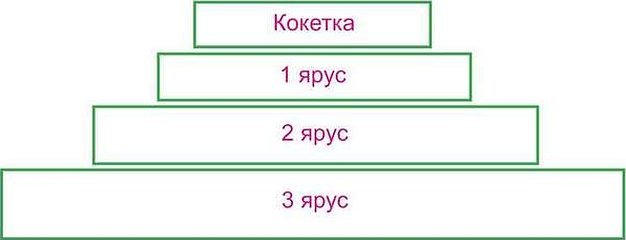
In this way, you can find the length of all tiers. The coefficient can be from 1 (barely visible gathering) to 3 (very lush gathering).
Fabric layout of the tiered skirt pattern
The sketch of a tiered skirt is rectangles of different lengths and widths. To make the layout economical, you need to optimally lay out the pattern on the fabric. In Figure 3, you can see the layout of the skirt elements on a piece of material 140 cm wide and 170 cm long. The fabric is laid out in one layer, without folding.
Layered American skirt (flared skirt)
The tiered American skirt is one of the most beloved in the fashion world. It is worn by girls of all ages and figures. Such a thing is quite easy to sew yourself.

The traditional American is made of three tiers, and frills or flounces are added to the last one. There can be as many of these frills as you like, it all depends on your preference. To connect the tiers of the American, a beautiful ribbon is usually used. The material itself can be of any color. At the end, if desired, the hem can be decorated with lace.
Model of a product with separate rows
The peculiarity of such a skirt is that the tiers are not sewn together, but connected to the base. The pattern of a straight skirt is taken as a basis according to the rule.
Attention! The tiers need to be sewn together so that they overlap slightly.
The process of sewing a tiered skirt with your own hands:
- Cut out and make the base of the product for the frills;
- Mark the locations of the tiers on it, thus determining the width of each row. Draw a line and mark each tier with the letters A, B, C;
- From points A and B, measure 3 cm upwards and make dotted lines - these will be the places where the tiers are connected;
- The length of each row is found using the same method as described above.
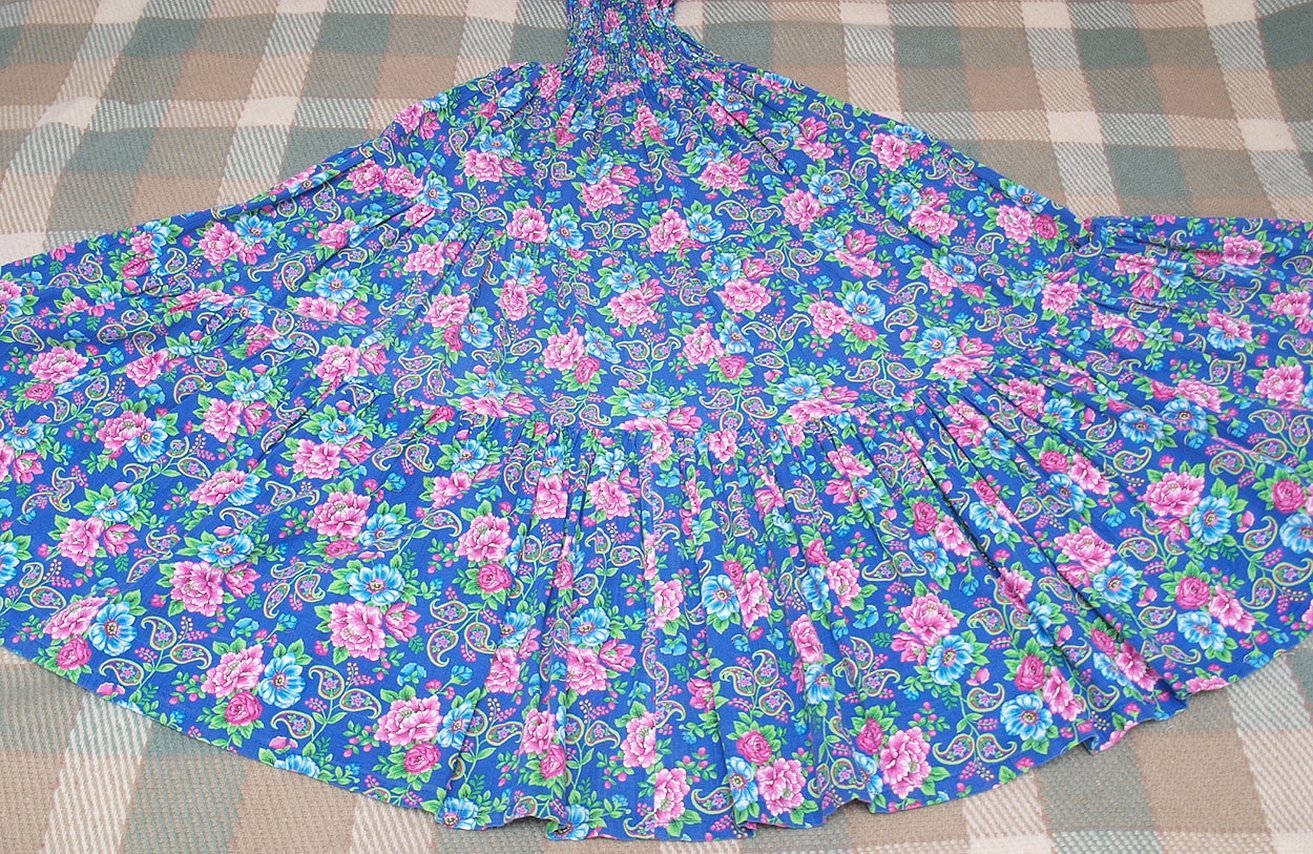
Model with thick and lush frills
This section discusses how to sew a multi-tiered midi skirt. For this example, the length of the product equal to 95 cm can be taken as a basis, and four tiers are enough.
How to calculate fabric
You need to start counting from the width of each tier. For this style, the difference in tiers will be 3 cm.
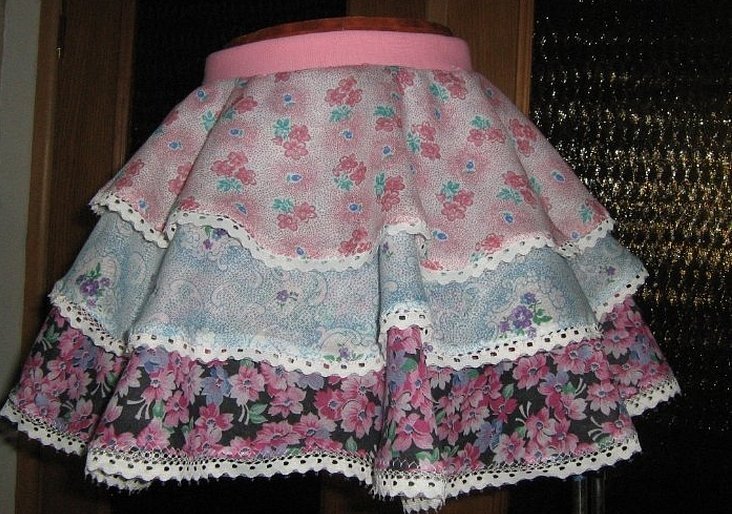
Calculation instructions:
- Find the width of the top tier by subtracting the difference between each tier from the length of the product: 95 cm – (2 + 2*2 cm + 3*2 cm) = 83 centimeters. And divide the finished result by the number of tiers;
- The resulting figure is 20 and will be the width of the first tier;
- The second level is 3 centimeters larger than the previous one: 20+3 = 23 cm;
- The third one is calculated in the same way and is 25 cm;
- The last tier is accordingly equal to 27 centimeters.
Moderate width model
Here is how to make a moderate width skirt step by step. The length of the finished skirt will be 75 cm, and the number of tiers will be three. The model will be medium puffiness.
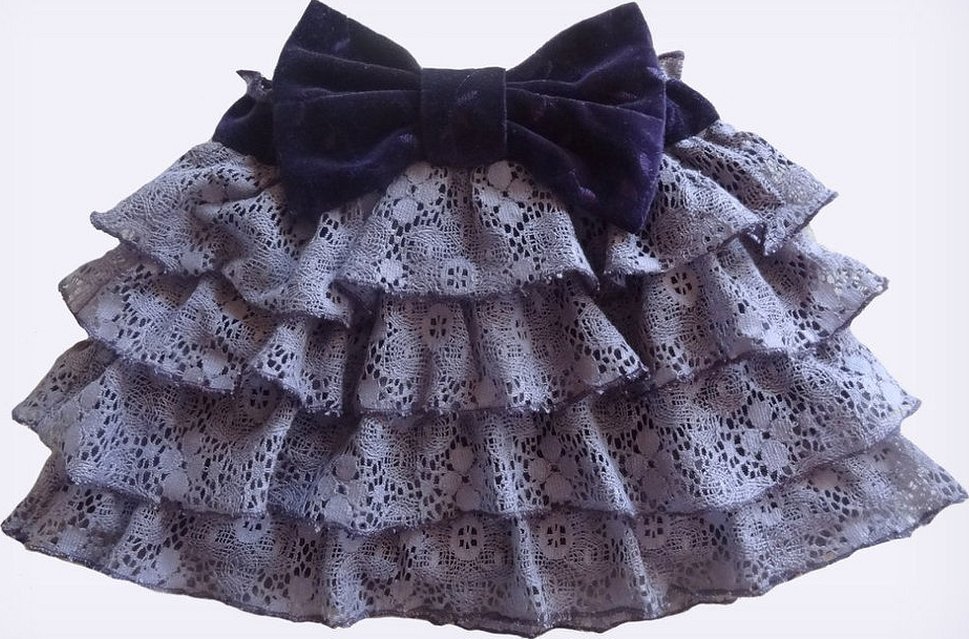
How to calculate the amount of fabric
First, the width of each row is calculated. In this model, the levels differ in width by 3 centimeters from each other. Step-by-step calculations:
- Subtract the difference from the length, multiplied by the sum of the levels: 75 - (4 * 3). The result is 63 cm, it also needs to be divided by the size of the rows in the product - 3;
- The resulting value is 21 centimeters and will be the width of the first tier;
- You need to add 4 cm to it. It turns out to be 25 centimeters - this is the width of the second level;
- Next you need to add 4 cm and it will be 29 centimeters - this is the width of the third level.
Now we need to find out the length of the individual levels.

An additional number is needed here - the assembly coefficient, which can be from 1 to 3. That is, 1 is light and barely visible assemblies, and 3 is large and lush assemblies on the product.
Since the skirt model implies a medium width, the coefficient will be 2.
Carrying out calculations:
- At the top, the level will be equal to the hip circumference with allowances of 5-7 cm. For example, the circumference will be 90, as a result, the length of the first level will be equal to 97 cm;
- The second level is equal to the product of the length of the first and the assembly number, i.e. 97*2 = 194 cm;
- Further calculations are made according to the same formula until the end.
Tiered skirt with yoke
Sewing a tiered skirt begins with a pattern. If you want to make your hips visually smaller, you need to sew the product on a yoke.
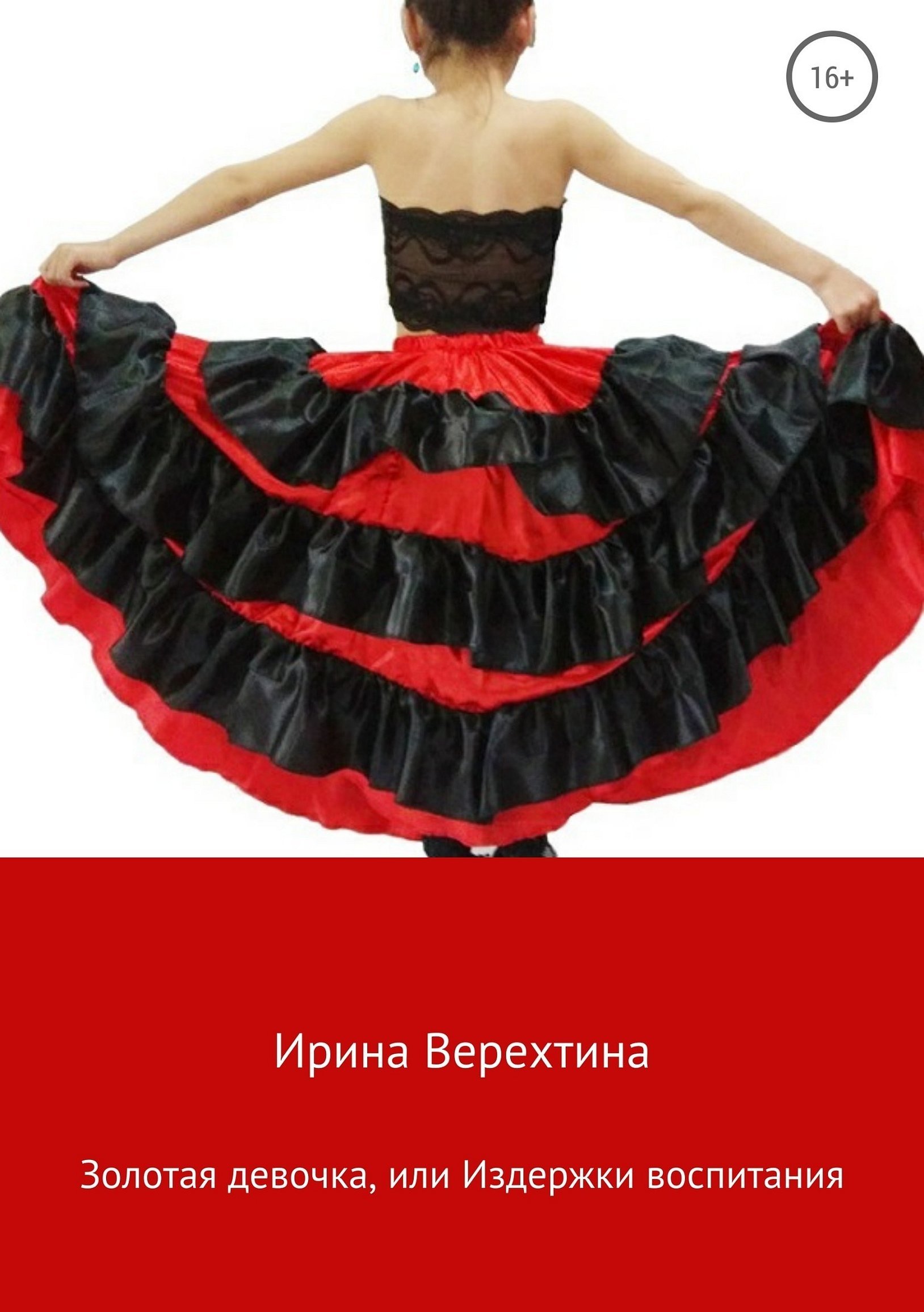
Here you need to know the rules for constructing a drawing and have at least some experience. On the basic pattern, you need to mark the yoke line. It must be chosen in the place most suitable for the type of figure. There are no exact rules for the width of the yoke, in each case it is different: from about 5 to 20 centimeters. Cut the yoke element from the base and close the darts. Next, you need to calculate the levels, taking the lower cut of the yoke as the waist line.
What to wear with tiered skirts
This product is almost universal. Young girls can combine skirts with sweaters, tops or blouses.
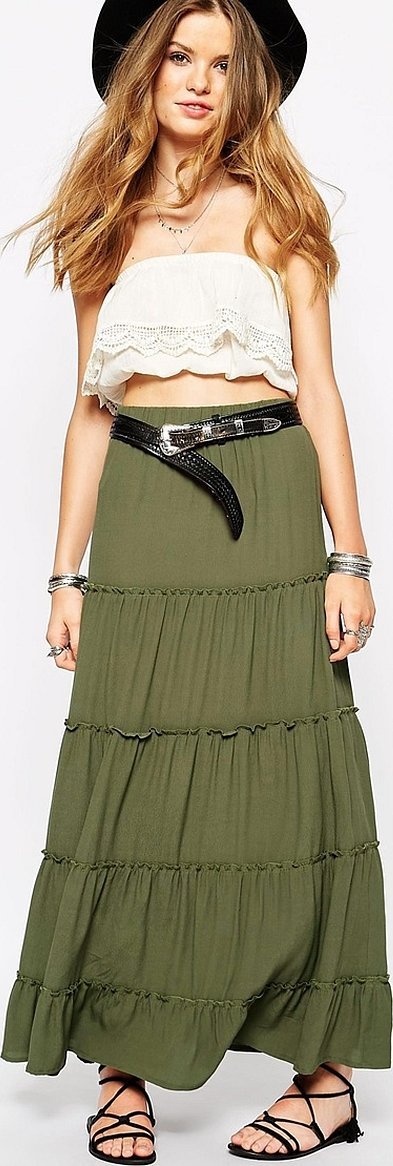
Both high heels and ballet flats will look great on your feet. Short multi-tiered skirts are best worn with open sandals and blouses. Full girls should avoid very shortened models; midi or slightly below the knee will suit them perfectly.
Attention! For a thin build, it is better to choose skirts with a large number of tiers, this will visually add volume to the hips and buttocks.
You can wear tiered skirts with a tulle train to the office; it looks quite gentle, but at the same time businesslike. It is better to wear closed shoes and light-colored blouses with this model so that all attention is focused on the skirt.
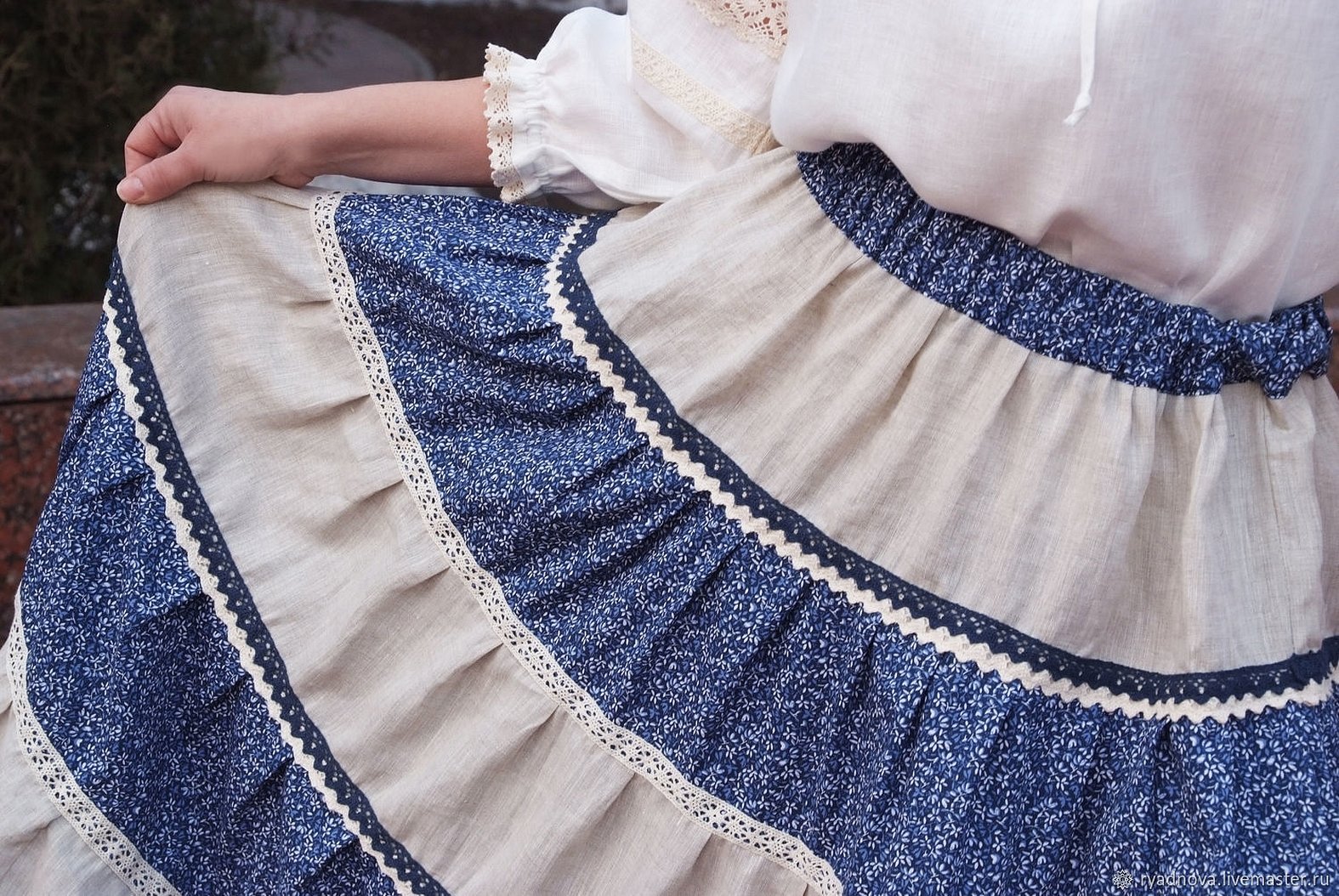
In conclusion, it should be noted that sewing a skirt yourself is not so difficult. It is important to correctly construct a pattern and take measurements, and the work itself does not take as much time as it seems. For those who do not know how to draw, you can find patterns for multi-tiered skirts on the Internet. If the seamstress does not have experience, then before work it is better to watch several master classes.




